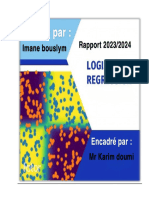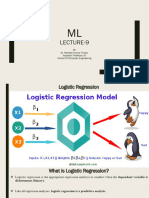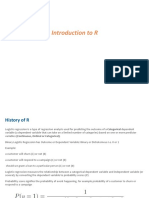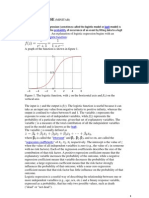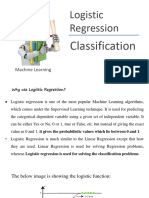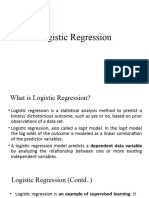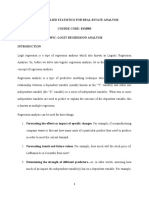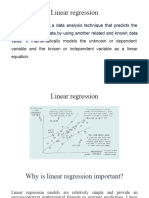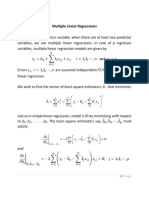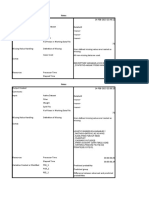0% found this document useful (0 votes)
14 views6 pagesLogistic Regression
Regression analysis is a method for modeling relationships between variables, with linear regression predicting a metric dependent variable and logistic regression predicting a dichotomous variable. Logistic regression helps determine influences on binary outcomes, such as disease presence, using independent variables like age and smoking status. The logistic function is used to estimate probabilities between 0 and 1, which is essential for predicting dichotomous outcomes.
Uploaded by
Vince TejadaCopyright
© © All Rights Reserved
We take content rights seriously. If you suspect this is your content, claim it here.
Available Formats
Download as PDF, TXT or read online on Scribd
0% found this document useful (0 votes)
14 views6 pagesLogistic Regression
Regression analysis is a method for modeling relationships between variables, with linear regression predicting a metric dependent variable and logistic regression predicting a dichotomous variable. Logistic regression helps determine influences on binary outcomes, such as disease presence, using independent variables like age and smoking status. The logistic function is used to estimate probabilities between 0 and 1, which is essential for predicting dichotomous outcomes.
Uploaded by
Vince TejadaCopyright
© © All Rights Reserved
We take content rights seriously. If you suspect this is your content, claim it here.
Available Formats
Download as PDF, TXT or read online on Scribd
/ 6


